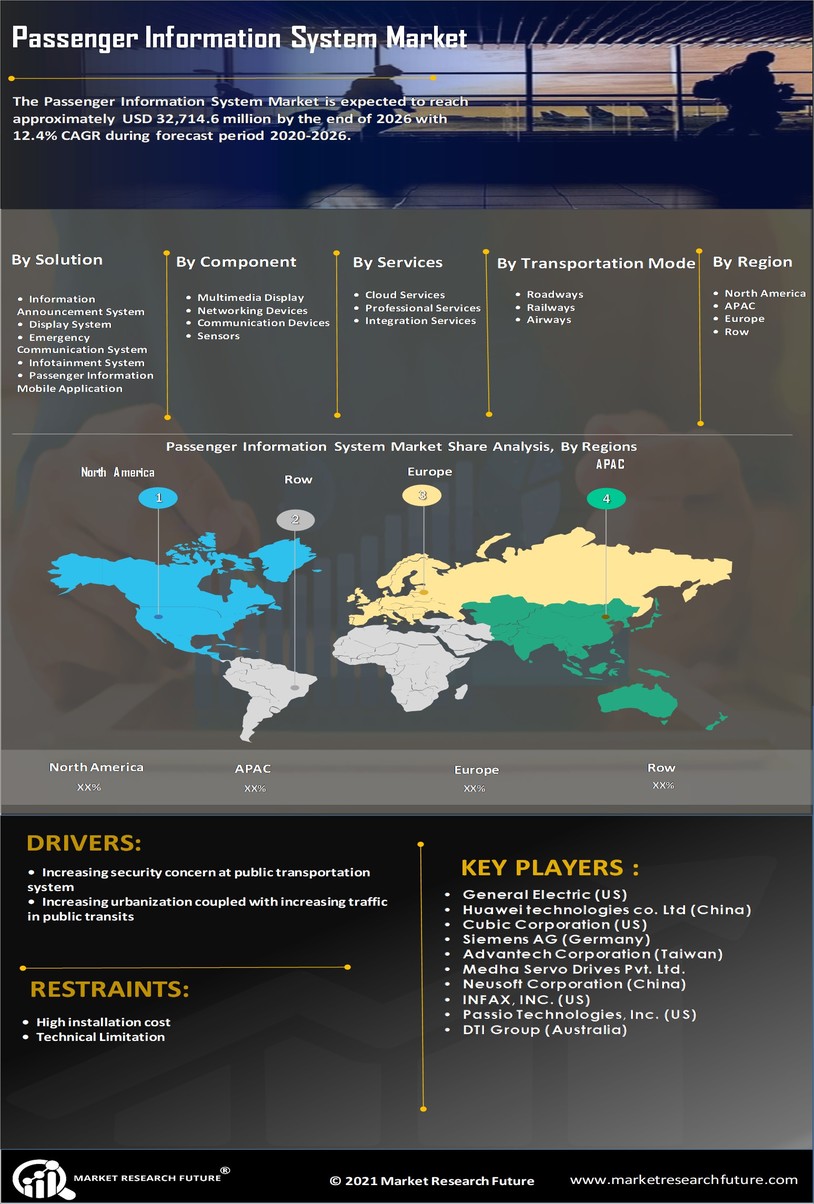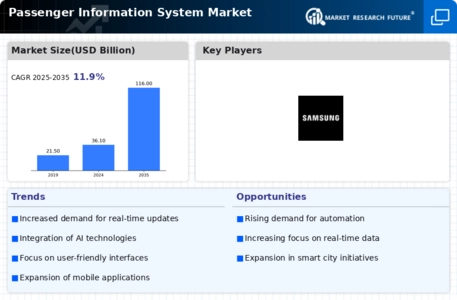Growing Urbanization
Urbanization continues to rise globally, leading to increased demand for efficient public transportation systems. The Global Passenger Information System Market Industry is poised to benefit from this trend, as urban areas require sophisticated information systems to manage the complexities of public transport. As cities expand, the need for real-time updates and accurate information becomes paramount to ensure smooth operations. This growing urbanization is likely to drive the market towards a projected value of 116.0 USD Billion by 2035, as municipalities invest in advanced passenger information systems to accommodate their burgeoning populations.
Market Growth Projections
The Global Passenger Information System Market Industry is projected to experience substantial growth over the coming years. With a market value expected to reach 116.0 USD Billion by 2035, the industry is on a robust upward trajectory. The compound annual growth rate of 11.19% from 2025 to 2035 indicates a strong demand for innovative passenger information solutions. This growth is driven by various factors, including technological advancements, urbanization, and government investments in public transport infrastructure. The increasing focus on enhancing passenger experiences and operational efficiency is likely to propel the market forward.
Technological Advancements
The Global Passenger Information System Market Industry is experiencing rapid technological advancements that enhance the efficiency and effectiveness of passenger information systems. Innovations such as real-time data analytics, artificial intelligence, and mobile applications are transforming how information is disseminated to passengers. For instance, the integration of AI-driven chatbots in public transport systems allows for instant communication of schedules and delays. This trend is expected to contribute to the market's growth, with projections indicating a market value of 36.1 USD Billion in 2024, reflecting the increasing reliance on technology to improve passenger experiences.
Integration of Smart Technologies
The integration of smart technologies into public transport systems is transforming the Global Passenger Information System Market Industry. Technologies such as the Internet of Things (IoT) and cloud computing are enabling seamless communication between transport operators and passengers. For instance, IoT devices can monitor vehicle locations and passenger loads, providing valuable data for optimizing service delivery. This integration not only enhances operational efficiency but also improves passenger satisfaction. As smart technologies continue to evolve, the market is expected to grow substantially, with a forecasted value of 36.1 USD Billion in 2024, indicating a strong trend towards modernization in public transport.
Government Initiatives and Investments
Government initiatives aimed at enhancing public transportation infrastructure are pivotal in driving the Global Passenger Information System Market Industry. Various governments are allocating substantial budgets to modernize transport systems, which includes implementing advanced passenger information systems. For example, initiatives in Europe and Asia are focusing on integrating smart technologies into public transport. These investments not only improve service delivery but also promote sustainability in urban mobility. As a result, the market is expected to witness a robust compound annual growth rate of 11.19% from 2025 to 2035, reflecting the positive impact of government support.
Rising Demand for Real-Time Information
The demand for real-time information among passengers is a significant driver of the Global Passenger Information System Market Industry. Passengers increasingly expect timely updates regarding schedules, delays, and service changes. This expectation has led to the development of systems that provide live updates through various channels, including mobile apps and digital displays at stations. The ability to access real-time information enhances the overall travel experience and encourages the use of public transport. As a result, the market is likely to expand significantly, aligning with the projected growth trajectory towards 116.0 USD Billion by 2035.











